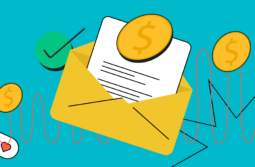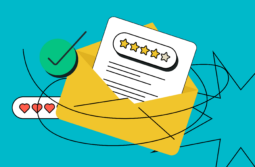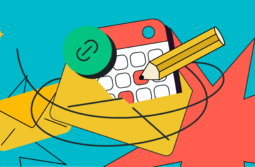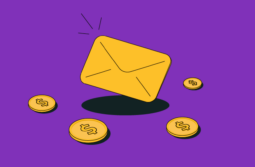Humans are social creatures, and this applies to all aspects of life, but especially in marketing and purchasing decisions. Taking a few minutes to remind yourself a little about how we humans work will help you optimize your marketing efforts. There have been decades of research done on this topic but our goal in this post is to distill it down to an overview of some psychological hacks you can use to benefit your brand and your customers.
To narrow the scope of this complex field, we are going to look specifically at things you can do to make use of psychology in marketing for your email campaigns. This guide is for you if your email campaigns are not performing as well as you would like them to. But even if you are happy with your performance, you can always squeeze more ROI out of your email campaigns by optimizing them with marketing psychology. Let’s dive in.
Content:
How can using psychology in marketing improve your performance?
The short answer is ー it helps you drive more conversions, sales, and increases the overall effectiveness of your marketing efforts. But, let’s look a little closer at the real impact of optimizing your email campaigns using marketing psychology.
Using social proof, the concept of gauging one’s purchases decisions based on the experiences of others will drive more sales. The numbers speak for themselves. According to BrightLocal, on average, consumers read 10 reviews before deciding to do business with a brand and 85% of people trust online customer reviews as much as they would trust a recommendation from someone they know.
Do you read online reviews for local business?
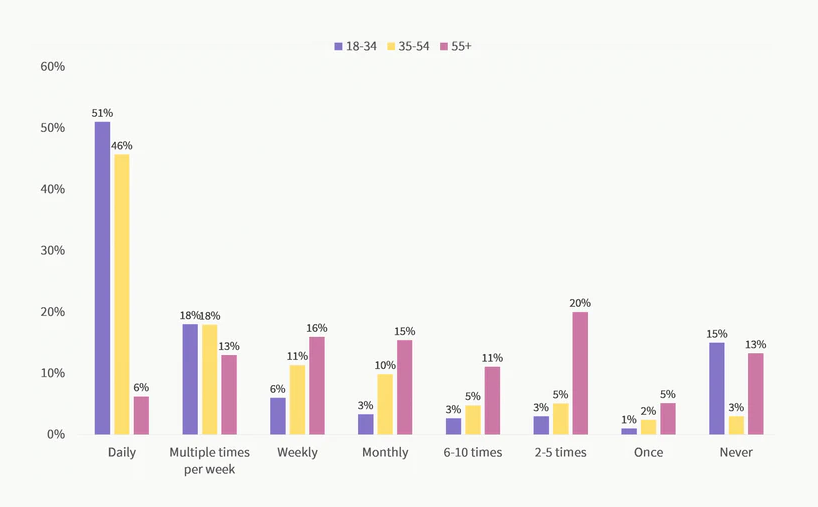
If you can boost your reviews and showcase the good experiences of your customers in your email campaigns, you are going to bring more people into your sales funnel.
Likewise, one of the most powerful psychological tactics in marketing, reciprocity, has shown unprecedented increases in sales figures. Reciprocity is the concept of “you help me, I’ll help you,” and it is highly effective. An American supermarket chain found that offering free samples increased sales by up to 20x. The same concept can be used in your email marketing campaigns to boost sales and bring you more customers in general.
So, it is clear that using psychology in marketing can do a lot for your business. We have gathered some tactics that you can include in your emails and reap the benefits. Keep in mind that there are no hard and fast rules for how to use each marketing psychology concept, but using them in a way that matches your brand’s style and tone is sure to help your sales trend upward, bring in more leads, and improve your brand’s image.
Psychological tactics in marketing emails
Now that we have an idea of the power of tweaking your marketing messages to benefit from psychological marketing tricks, let’s look at some of the concepts you can use to make your emails more effective.
Social proof
This one is a classic, and it remains one of the top marketing psychology strategies that you can use to benefit your brand. Put simply, social proof is a phenomenon that entails one person looking at the behavior or experience of others to inform their own behavior.
Goal: show that there is some social consensus that your product or service is used and loved by a wide audience.
For example, let’s imagine that you are walking to a bakery, but you cannot remember what time it opens. You think you may be too early. As you approach the bakery you see another person walk up to the door, look in, and walk away. What does this tell you? The bakery is closed, right? Your assumption that the bakery is closed is based solely on social proof. Humans rely on gauging the results of other’s behavior to inform their own. You’ll have to wait 30 minutes for doughnuts.
This concept applies to so many aspects of our lives, especially in marketing. And, fortunately for you, there are a ton of ways that you can easily work it into your emails. You can use social proof in the form of customer testimonials, user-generated content, brand authority, expert or celebrity endorsements, the list goes on and on. This is one of the oldest tricks in the book. Let’s look at some examples of emails with expert-level social proof.
Nike knows a thing or two about using psychology in marketing, just look at the email below. It is overflowing with powerful social proof. Nike’s goal is to be there for their customers and fans who are spending more time inside and miss exercising in the ways that they are used to. Starting with Coach K discussing the importance of adapting to change and overcoming hardship, Nike opens the email with a strong endorsement of their products and the brand’s tone.

Then, we get a healthy dose of social proof below by seeing the number of people using Nike’s online resources. This creates a sense of community, which is sure to encourage people to join the movement of staying active indoors.
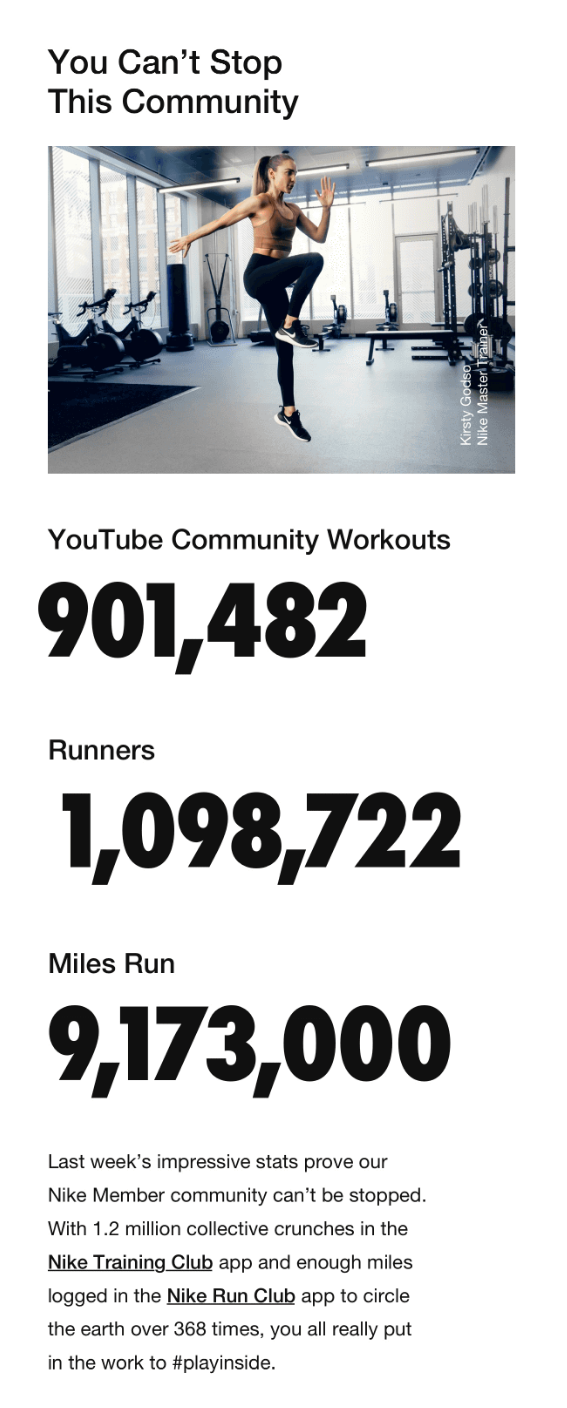
Nike wraps up this email with another appeal to their community with the tagline “You can’t stop us.”
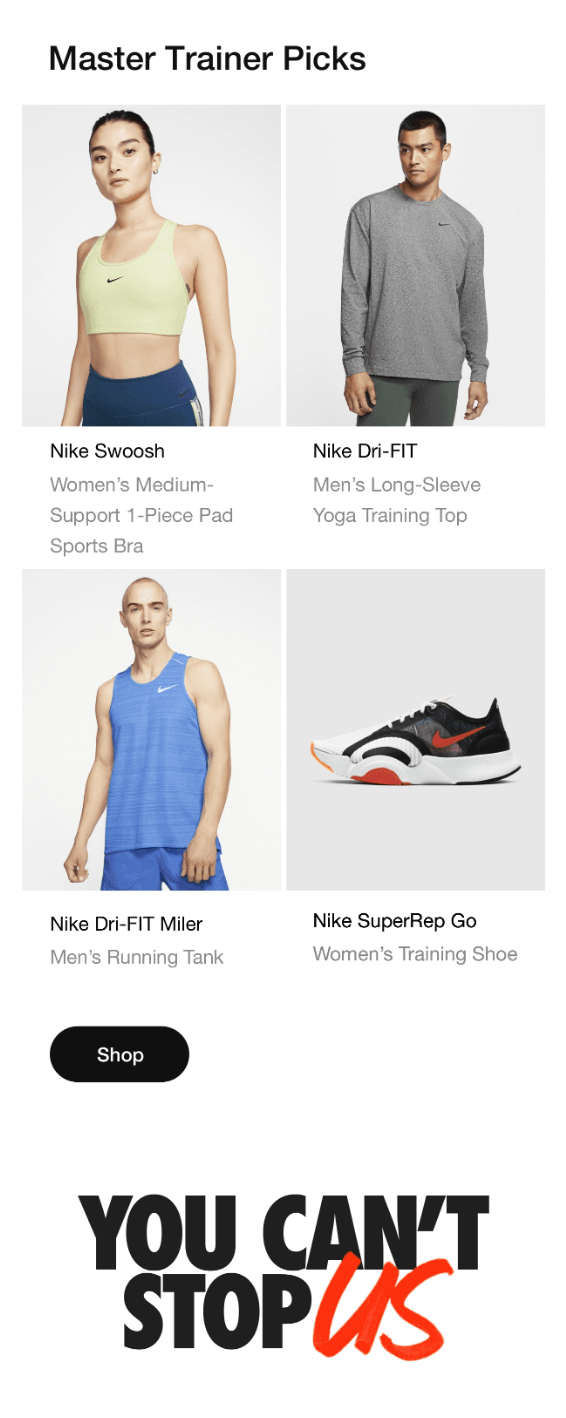
Framing
This concept is all about showing your product or brand’s “best side.” This does not mean that you should mislead your customers, but rather use language and content that builds on your strengths. You can think of using framing in the same way you represent yourself in an interview. Instead of saying that you are not the most organized person, you may say that you manage projects in a unique way that gives you a different perspective. This is exactly what you need to do with how you explain your brand and products.
Goal: represent your product in the most appealing and beneficial way possible.
Imagine that you own a cloud storage company, your users will be interested in the speed of your network. Let’s say that it takes between 5-10 minutes to upload a 2GB file for the average user. Instead of saying “uploading a 2GB file may take up to 10 minutes,” reframe your message to focus on the positive aspects, “upload a 2GB file in less than 10 minutes.”
This is a basic concept, but if you go through your marketing messages with the goal of implementing this psychological hack, you will likely find something that you can reframe.
Instead of sending an email asking a customer to return and mentioning what they are missing, Netflix has reframed their re-engagement email to include only a single button and show the loads of value that the customer could have if they rejoin Netflix.
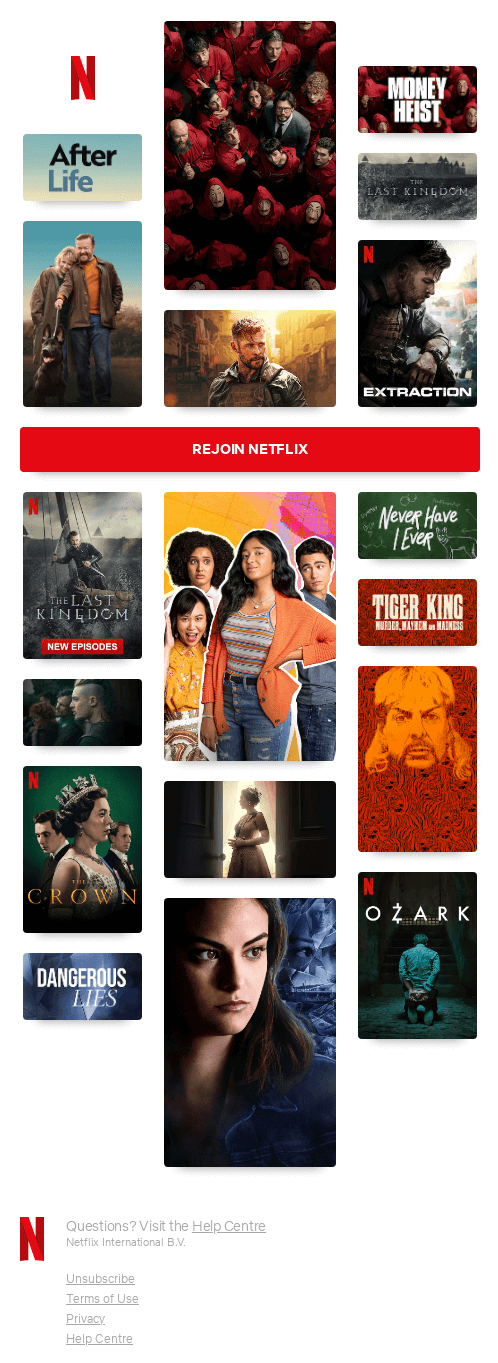
Exclusivity
Whether we like it or not, humans tend to value things that are scarce, rare, or exclusive. Gold, for example, has been loved since nearly the beginning of human existence. Why? It is a scarce and attractive product.
Goal: make your brand and products highly desirable, one of a kind, rare, or scarce.
Doing things like showing that there is a limited number of a product available, introducing a special edition of your product, offering exclusive experiences, having limited-time discounts, and emphasizing that your offer is only for a certain subset of your customers serves to represent the value and exclusivity of your product. In turn, your product and brand will become more desirable.
The example below from Famous Footwear uses email psychology to create a strong feeling of exclusivity. First, it’s subject line, “Rewards Member Exclusive! Enter for a trip to NYC,” clearly states that this offer is only for rewards program members. Next, the email explains that there is a giveaway for an exclusive trip to New York City for the Thanksgiving Day Parade. Not only is this offer exclusive to Famous Footwear Rewards members, but it is also offering a rare experience. The email has a double helping of exclusivity in one package.
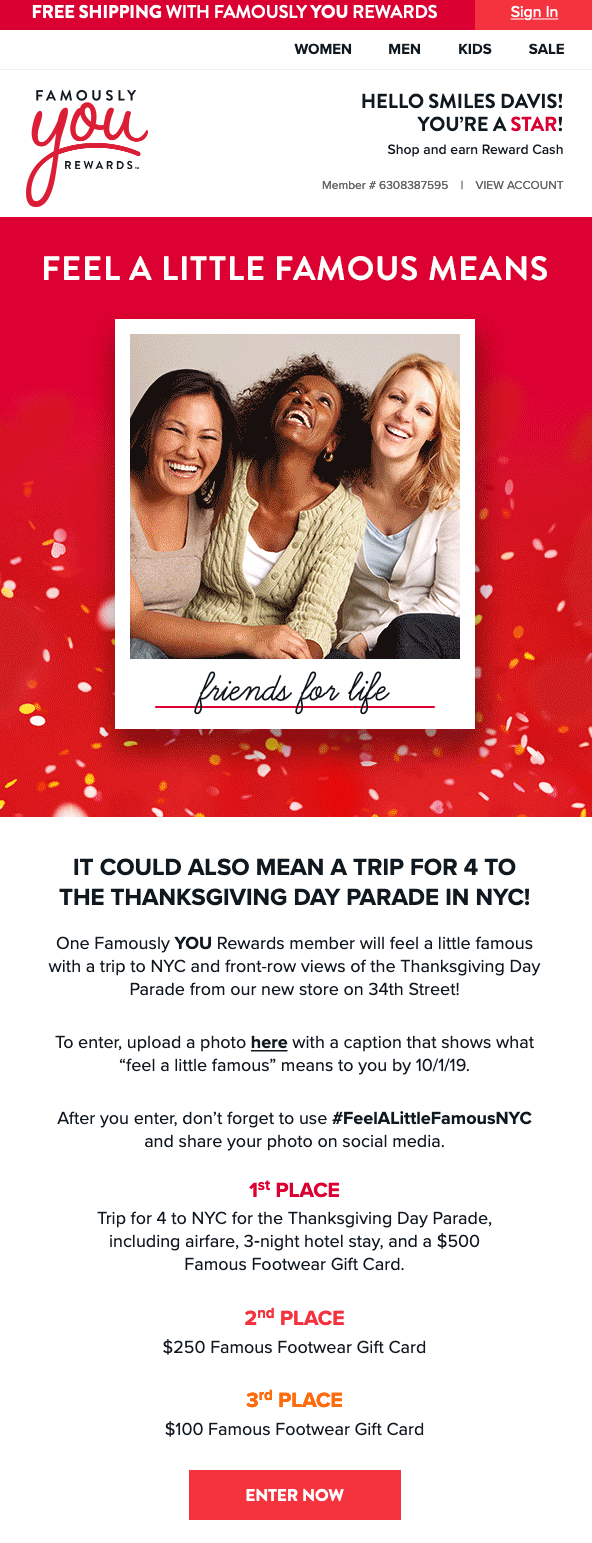
Fear of missing out
The fear of missing out, FOMO, goes nicely with the concept of scarcity that we talked about above, but it can also be used to create the feeling that anything is scarce. Even if you are not familiar with the term, FOMO is part of your life constantly.
Goal: create hype around your brand, product, or event that catches and holds peoples’ attention and draws them in.
How often do you hear lines like, “here for a limited time,” “get free shipping if you order before the 14th,” or “book your flight in the next two hours to check a bag for free.” FOMO can also be experienced-based. If you have ever missed an event that your friends had a ton of fun at, you probably experienced some FOMO the next time you were making plans to go to an event.
While we may want to think that we are above “primitive” appeals, the data suggests otherwise; 60% of millennials make purchases based on FOMO. Creating experience-based FOMO is really straightforward, and in fact, you likely have to do nothing to make use of it. If you recently hosted an event, it is likely that attendees will post about your event on social media, you can increase the likelihood of this by using a branded hashtag for your event. Next, all you need to do is share some of these posts and impressions from attendees of your event in your email campaigns, and… instant FOMO for your next event. Another great way to use this gem of email marketing psychology is to include a countdown timer in your emails to really drive the point home.
This email from Bose not only uses social proof but creates major FOMO without being too pushy. It highlights some of the products, shows recipients that there are big sales, and, critically, reminds users that the sales are only available for a limited time. Showing subscribers that they could be leaving value on the table if they don’t act quickly is classic, yet effective, FOMO.
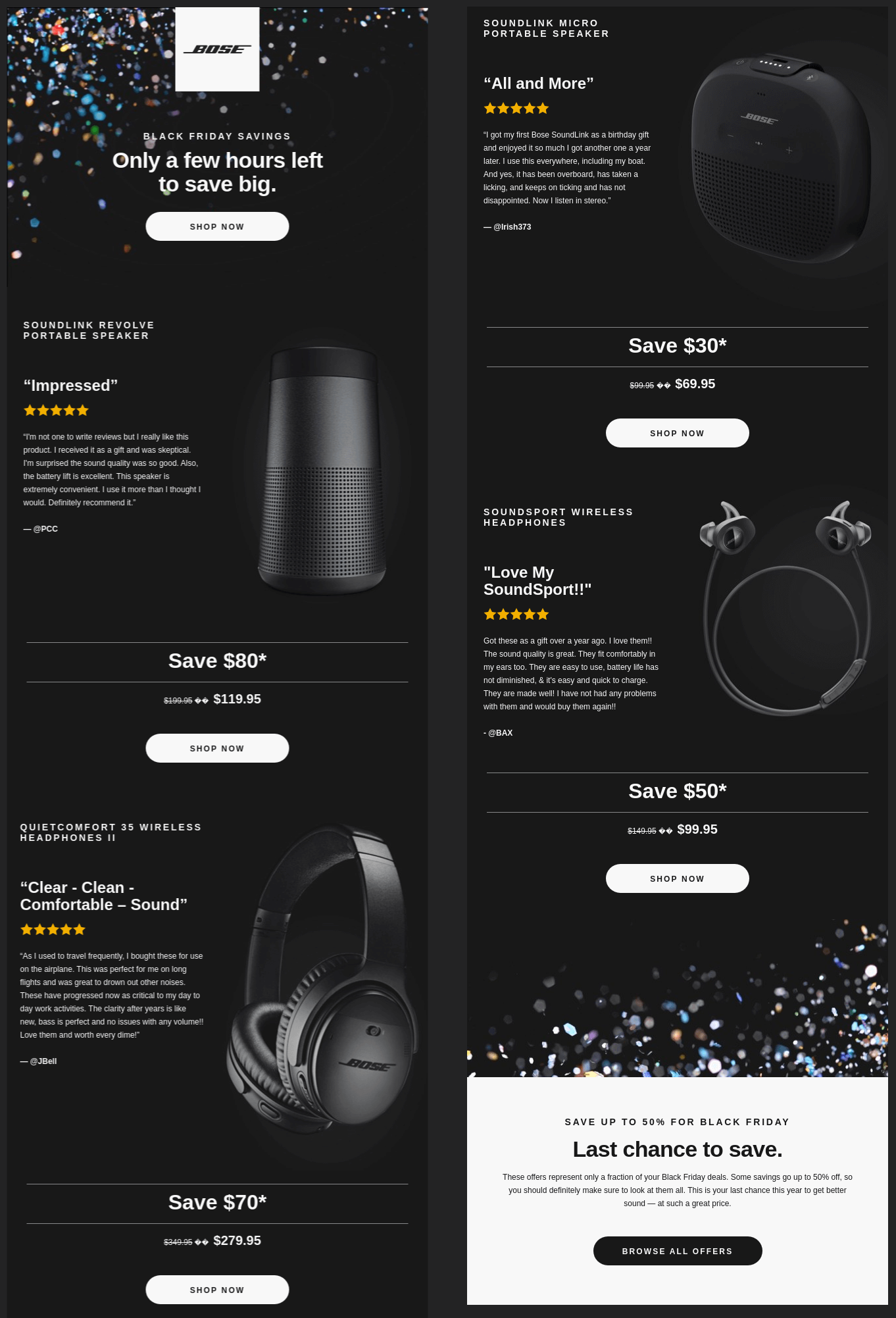
Reciprocity
This concept is older than marketing in its own right, the idea of you scratch my back, I’ll scratch yours. In marketing psychology, reciprocity refers to providing value to your prospects in order to motivate them to “provide value” in return by buying your product or service.
Goal: start every customer relationship with a feeling of positivity and goodwill.
There are significant options for your initial value offering to get the ball rolling in your reciprocity journey. A simple way to start is to use a lead magnet in your subscription form. This is a simple “reward” given to site visitors for subscribing to emails from your brand. You can include a free eBook, cheatsheet, discount, extended trial, and more. This will boost your subscription rates and start your new relationship.
Another option for using reciprocity is to include some value in your email campaigns. Particularly in the first emails that you send a new user, like in your onboarding series or welcome email.
The online suit rental store, The Black Tux, is using psychology in marketing with an attractive offer in one of their onboarding emails. This is an A+ example of reciprocity because the brand is offering a completely free trial of their service. After all, there is no better price than free. This offer is designed to give new subscribers a chance to have an excellent interaction with The Black Tux. If subscribers have a great experience for free, they are much more likely to make a paid order from the brand in the future.
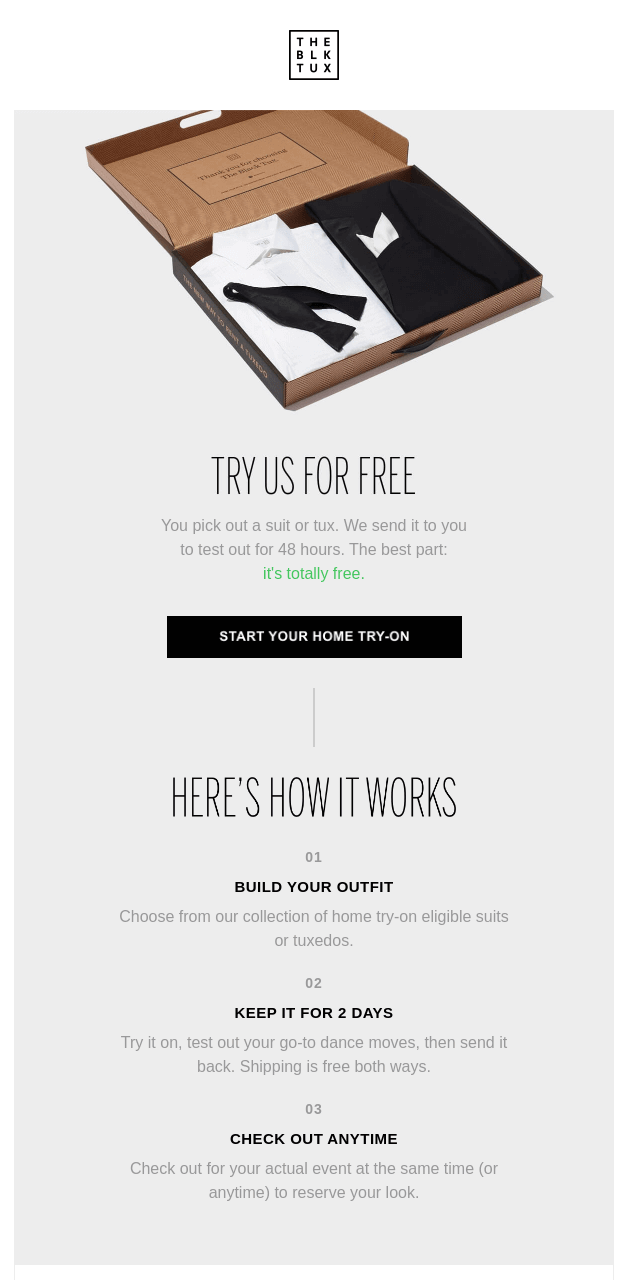
Persuasive language
It’s hard to talk about psychological hacks for email marketing without taking a look at the copy of your email. Email copywriting is not an exact science, but there are definitely some traps to avoid. When creating an email, it can be appealing to use attention-grabbing language and make bold claims. However, there is a fine line between a persuasive email copy and spam.
Goal: make your email as persuasive and legitimate as possible while avoiding the spam folder.
Naturally, it is best to include all of the above concepts, but also, you need to make sure that your email’s copy uses language that motivates your subscribers to continue interacting with your brand, and moves them through the sales funnel. It is best to keep your emails light and fill them with content that creates positive emotions. Think of each email like a scene that you need to set, using sensory language, staying casual, but respectful of your subscribers.
This email from Eight Sleep makes you imagine sleeping in a new bed, tells you that you can finance your purchase “stress-free,” and offers a 100-day free trial. This is a killer deal and the email’s persuasive copy really drives the point home. The large heading “Sleep now, pay later,” shows readers that the brand is taking the stress out of getting a new bed and reassuring subscribers that this is an easy-going deal. There is no fluff, just all of the information that you need, presented in a way that makes readers imagine themselves in a new bed.
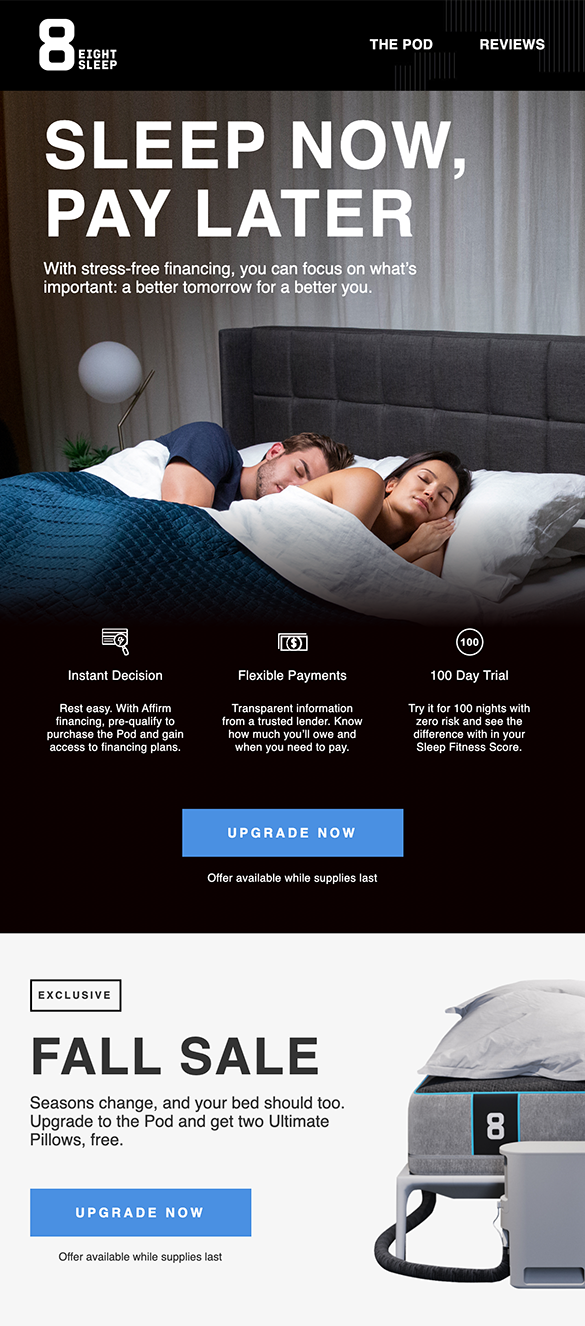
Colors
Color psychology is a complex field but is also one of the top psychological hacks. You can see color psychology in action in almost every interaction that you have with a brand’s marketing materials. Focusing on colors in email marketing can be somewhat of a rabbit hole, but its effects cannot be overstated. Optimizing your emails for colors that match people’s tastes can help you squeeze every bit of value out of your marketing emails. For example, Hubspot found that simply changing the color of a CTA from red to green increased their click rate by 21%, and that is nothing to sneeze at.
Goal: use popular colors, avoid unpopular colors, and don’t overload your email with color.
A general theme of color in email psychology is that colors are subconsciously linked to specific emotions, but there are lots of exceptions and outliers. Instead of reciting associations, we decided to show you a more quantifiable metric, people’s self-reported favorite, and least favorite color.
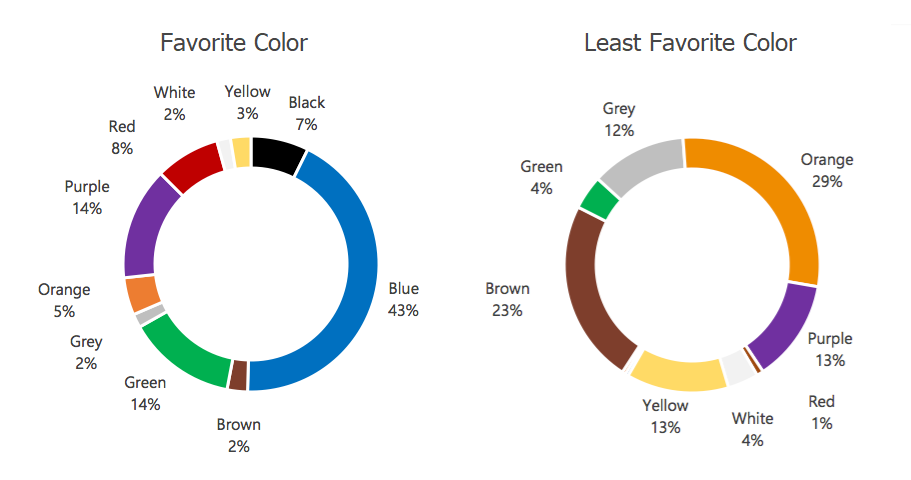
So it is clear that blue is favorable by 42% and unfavorable by a shocking 0% of respondents. Based on this study, it is probably a good idea to stay away from orange and brown. Generally, it is best to not overload your emails with color, pick a small palette, and stick to it. The email from Harry’s below uses two prominent colors, blue and green. Both of these colors performed well in the study and look great in this email.
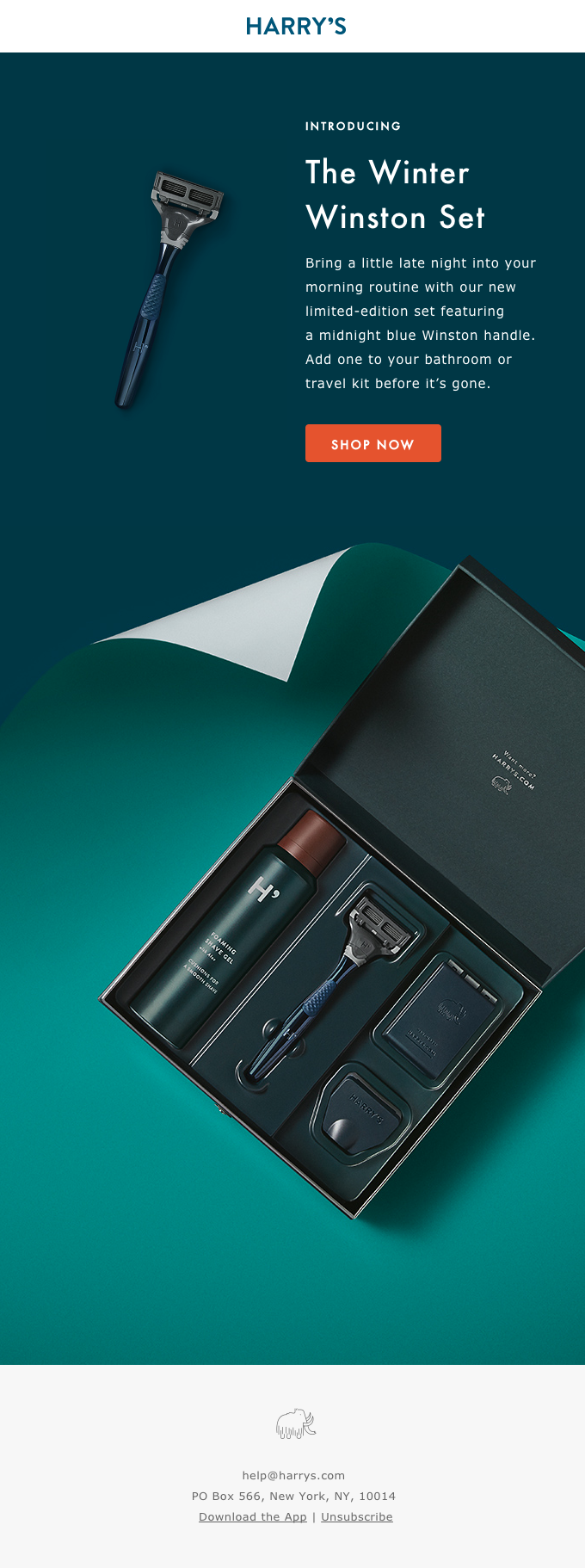
Email psychology takeaways
We have unpacked quite a few psychological hacks and examples, but it all boils down to what works for your brand. Every audience is a little different and expects different things from the brands they interact with. However, here are four general takeaways to keep in mind when creating or updating your next email campaign.
- Combine several tactics. While we talked about each concept individually, these concepts do not exist in a vacuum. You can use a few psychological marketing tricks in every email that you send. Marketing and psychology should be united in each of your emails for the best results. There are unlimited combinations and variants of any email, so don’t be afraid to try different approaches.
- Refine your emails. Each email psychology tactic can be taken too far and become too “salesy.” No one likes an email that is transparently being pushy. Some people find it insulting, others won’t even open the email. So, yes, you should use psychological hacks, but with a customer-centric mindset. FOMO, exclusivity, and persuasive language are wonderful tools but should be used to add value and move leads through the funnel gently, not force a sale.
- Show your strengths. The goal of marketing is to make more sales, and making your brand more attractive is a wonderful way to do just that. Use reframing, social proof, and reciprocity to improve your brand’s image and bring in more leads. Just be sure that you are showing your best side without misleading your audience.
- Iterate. Using psychology in marketing does not mean making a change to an email template and forgetting about it. You can incrementally improve your emails and monitor their changes in performance over time. Try using different colors, adding new images and text. Your email service should provide detailed statistics about campaign performance and this will come in handy. Don’t be afraid to play around with different options as you continue to improve your emails.
You’ve done it! Now you know a few ways to get more from your email marketing efforts. Don’t forget that you can send 15,000 emails a month to 500 subscribers for free with SendPulse. Try your hand at working some of these tactics in and watch the results roll in.




